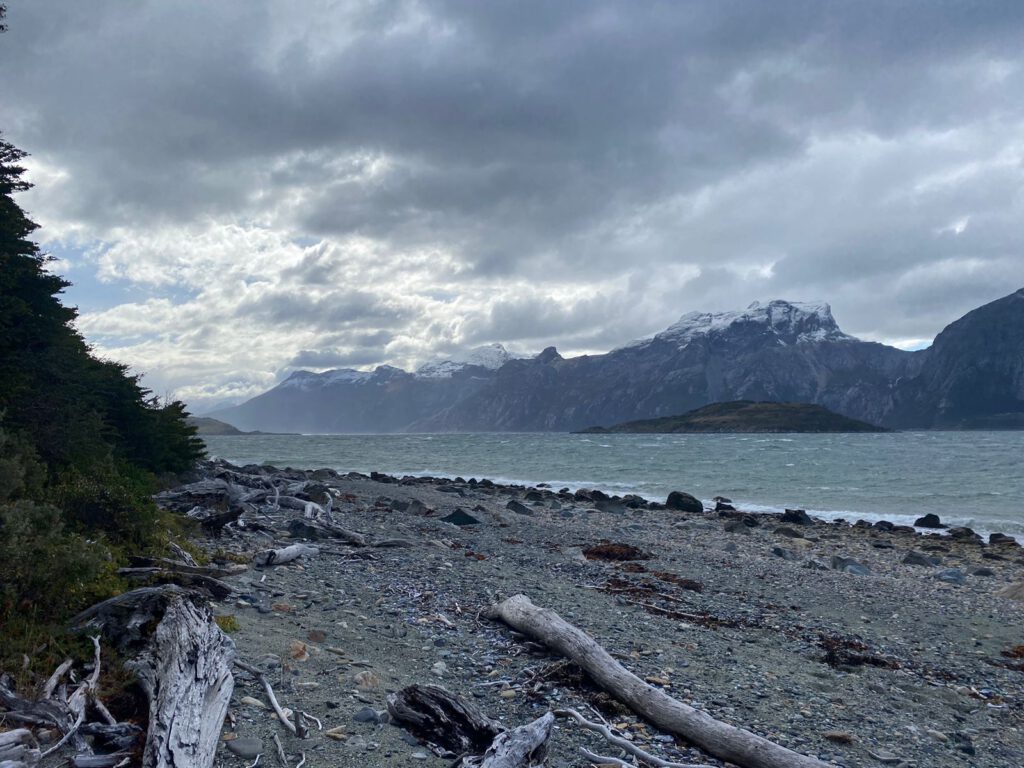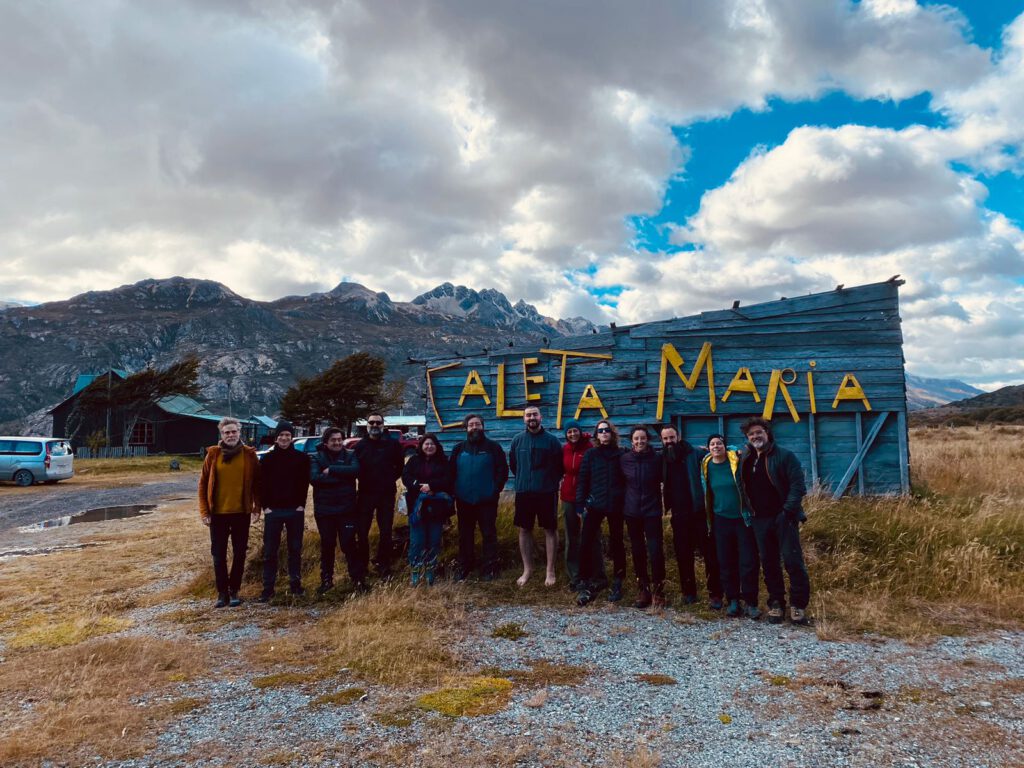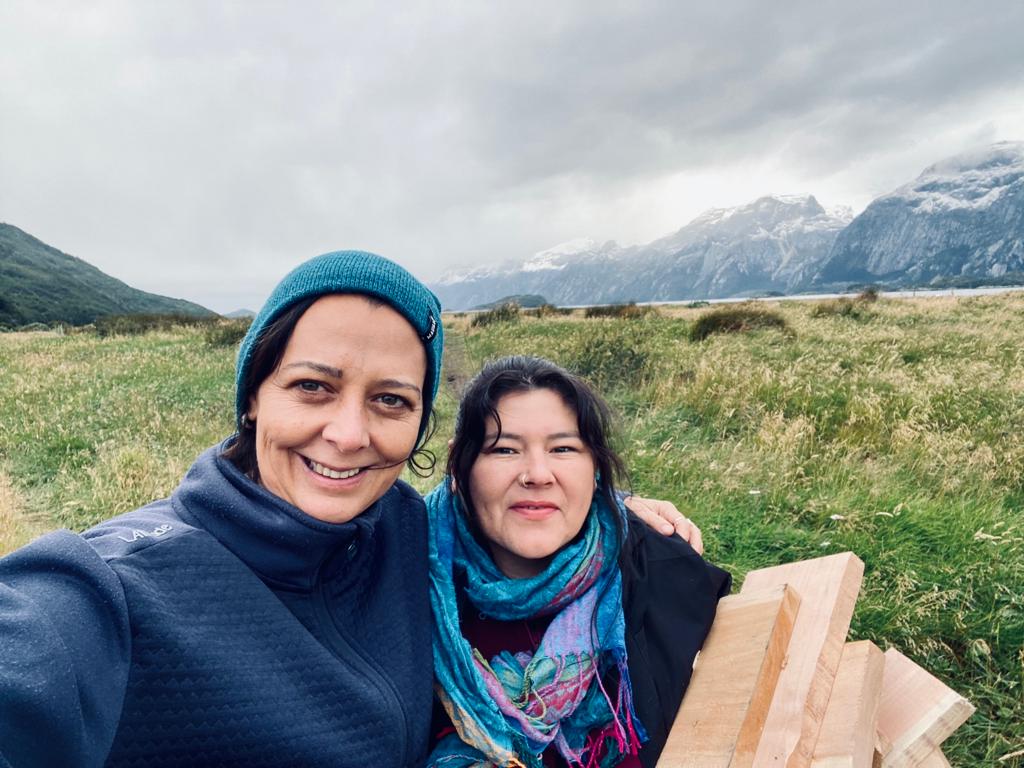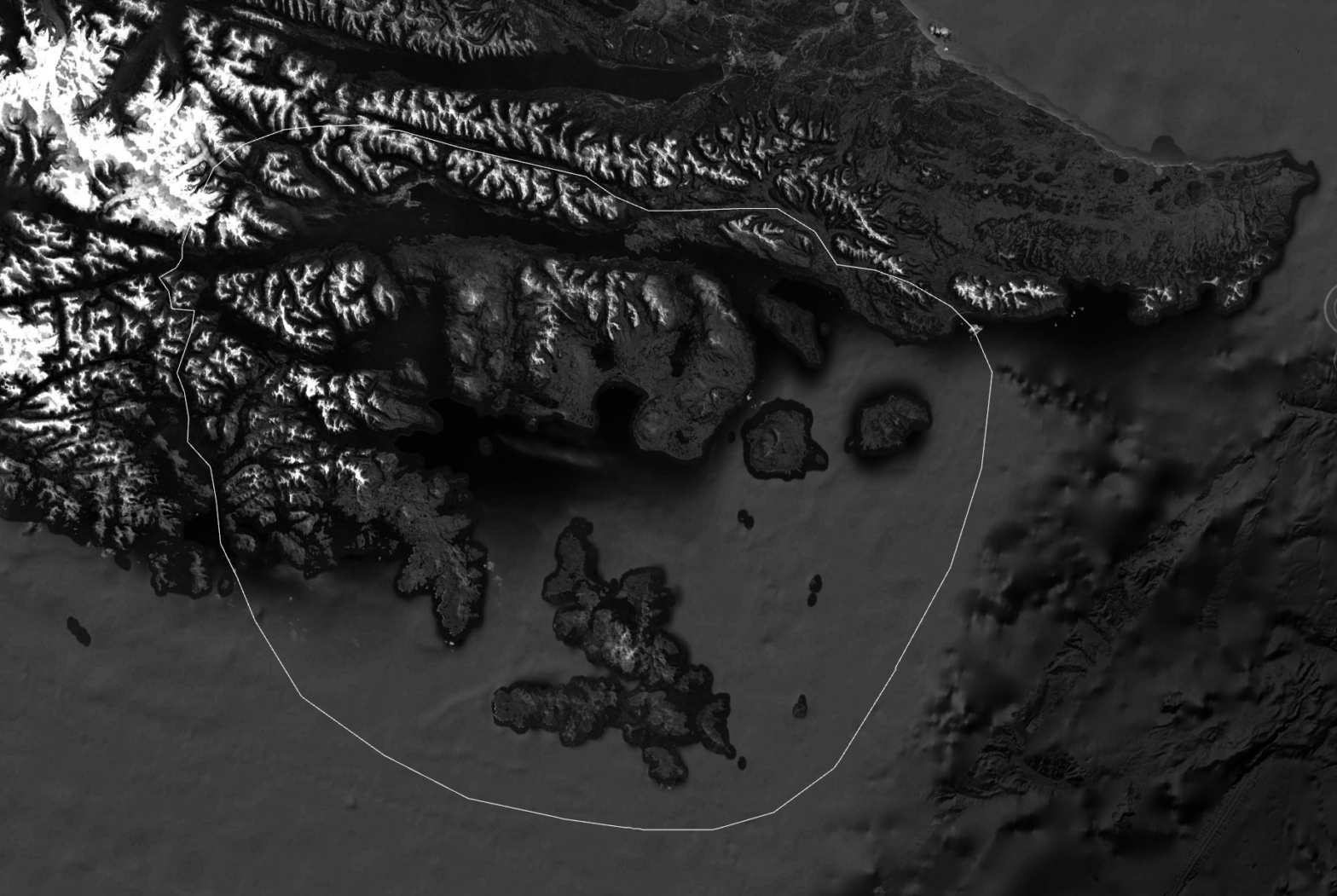Report by Claudia González and Paula Urdangarín
We arrived without really knowing what we were going for. We received the invitation to participate, and we embarked on the Terra Ignota adventure. We let ourselves be carried along a new, unknown path.
In the immensity of the landscape, we could perceive our smallness, the tiny fragment we represent on this Earth.
We knew that we had to merge with that landscape, to feel part of it, to understand. In that sense, it was fundamental to internalize, to understand the perception of the other members of the group. What unites us, what connects such a diverse group of people in terms of culture, trades, languages, ways of seeing life. In this extreme area of light, sea, wind, the movement of knowledge and experiences was fundamental.
It was a completely coincidence, the meeting between two people who had shared in childhood and then lost all contact. It was the first night in Caleta María that we recognized each other and began to talk about the issues that concerned us and that were directly intersected.


Claudia González was invited to participate as a representative of the Yagan community. As the daughter of one of the most renowned and recognized Yagans in Chile and the World for his work in the preservation of the Yagan culture, Claudia was interested in giving greater visibility to her people, to their history, to make known the richness of their culture, their knowledge of navigation, of subsistence in such adverse climatic conditions, of a millenary people of the southern seas unknown to many. She was also looking for a way to get inside the governance[1] of protected areas, to find a way to guard and protect the southern lands and seas.
Paula Urdangarín, a lawyer, was going to see if among the current legal forms of protection in Chile there was one that suited the ideas of protection of Terra Ignota. In conversations with other participants, the idea of creating a museum had arisen, but as we investigated the subject in more depth, we realized that in Chile the concept of museums is complex, there is no uniformity, and the container is protected more than the content. The more we investigated, the more doubts arose: what norm connects us, unites us with nature in a respectful way, generating reciprocal, long-term relationships? Does such a figure exist in Chile?
Claudia commented that she had been presenting projects to declare a protected area for years, but that had been rejected by the authorities.
On this point, it should be noted that the management of wilderness areas in Chile is carried out by CONAF (National Forestry Corporation), a private law entity under the Ministry of Agriculture. Law No. 18.348 defines its function as “conservation, protection, increase, management and use of the country’s renewable natural resources”. This institution is also in charge of directing the National System of State Protected Wildlife Areas (SNASPE)[2].
This “System” is integrated by 4 figures or forms of environmental protection: Virgin Region[3] Reserve; National Parks[4], Natural Monuments[5] and National Reserves[6].
The Law N° 17.288 on National Monuments included an additional category of protection, called Sanctuary of Nature. These are defined as “all those terrestrial or marine sites that offer special possibilities for geological, paleontological, zoological, botanical or ecological studies and research, or that possess natural formations, whose conservation is of interest to science or to the State”.
All these figures come from the 1940 “Convention for the Protection of the Flora, Fauna and Natural Scenic Beauty of the Americas”, signed by Chile in 1967. This Convention, which ostensibly sought to: “…to protect and conserve in their natural environment specimens of all species and genera of their indigenous flora and fauna, including migratory birds, in sufficient numbers and over sufficiently large areas to prevent their extinction by any means within the reach of man…”, and “… to protect and conserve landscapes of incomparable beauty, extraordinary geological formations, regions and natural objects of aesthetic interest or historical or scientific value, and places where primitive conditions exist within the cases referred to in this Convention; “…to conclude a convention on the protection of flora, fauna and natural scenic beauty…”, was actually created by the United States to justify and eradicate the native population and establish the “New America”. This can be directly related to our own history in Chile, with our native peoples and what is currently happening in Tierra del Fuego and the whole area of the Beagle Channel and Cape Horn.
Analyzing the protection figures currently in force, we could conclude that there is no absolute protection of these areas in our legislation. There are legal loopholes that can be – and are – exploited so that economic interests prevail over the real protection of these areas. There is legal ambiguity regarding the supposedly protected areas; there is no long-term certainty.
Moreover, there are “Nonprofit foundations” that boast of having extensive portions of protected areas and ecological parks, however, with a little research, it can be seen that in the shadows, they are large companies that take on a role that corresponds to the State in governance, but without ethics or the assurance that in the future, with a change of conditions, economic needs, they will continue with their promise of protection.
Another important unresolved issue is the situation of the Yagan people regarding access to their lands. The legal and administrative procedures for obtaining property rights to their ancestor’s lands are so difficult that almost no one in the community has chosen to apply for them.
In addition, Claudia, her relatives, and acquaintances are not free to visit and navigate their ancestral lands and navigation routes. They need a series of administrative permits granted by the Navy, as this is an area of “inland waters of strategic use” for the State. Moreover, we have been able to ascertain that from Puerto Montt to the North, there is a cartography that delimits these internal waters of strategic use. However, from Puerto Montt to the south, there is no mapping at all.
How can we explain that a canoe-dwelling, nomadic, gathering people, who for at least 6,000 years have freely navigated and transited the southern channels and islands, are restricted to navigating and visiting the seas and lands only a couple of times a year? While we know that the Beagle Channel is a strategic area for the Chilean state, what about the rights of the Yaghan people, for whom these waters are and have always been strategic for their survival?

With all the above, gathering the visions of our interdisciplinary group, with different points of view, we did not find answers, only more and more questions: Is it possible to grant legal personality to Nature? Is our country, our society ready to grant real rights to Nature as a living entity? Are we mature enough to enter the discussion of non-human rights? What are we lacking as a society to recognize the ancestral rights of the Yagan people to freely roam the southern seas?
In the near future, will protected areas be respected? In case of scarcity, will the southern channels be ravaged and violated as they have been throughout our history? What tools do we have to prevent this? Do we have the tools?
How do we face the responsibility of translating our experience into something tangible, not just ideas or questions?
We did not find an answer. It only became clear to us that there is a long road of work and dissemination to achieve the preservation of the southern islands.

[1] Governance” is linked to the institutional policy processes and outcomes necessary to achieve development goals. To be “good”, it measures the degree to which the State guarantees or fails to guarantee people their fundamental rights.
[2] Established by Law No. 18.362
[3] An area where primitive natural conditions of flora, fauna, habitation, and communications exist, with no roads for motorized vehicle traffic, and closed to all commercial exploitation. The objective of this management category is to keep such reserves inviolate as far as practicable, except for duly authorized scientific research and inspection by the Corporation, or for other purposes consistent with the purposes for which the reserve has been created.
[4] A generally extensive area, where there are several unique or representative environments of the natural ecological diversity of the country, not significantly altered by human action, capable of self-perpetuating, and where the species of flora and fauna or geological formations are of special educational, scientific, or recreational interest.
[5] A generally small area characterized by the presence of native species of flora and fauna or by the existence of geological sites of scenic, cultural, educational or scientific significance.
[6] An area whose natural resources need to be conserved and used with special care because of their susceptibility to degradation or because of their importance in safeguarding the well-being of the community.
